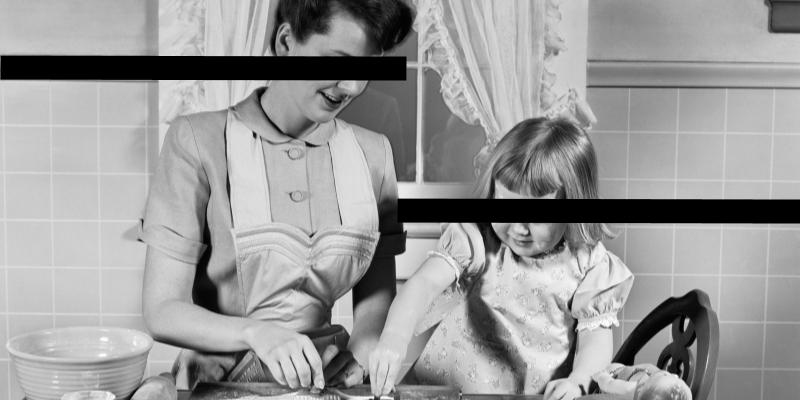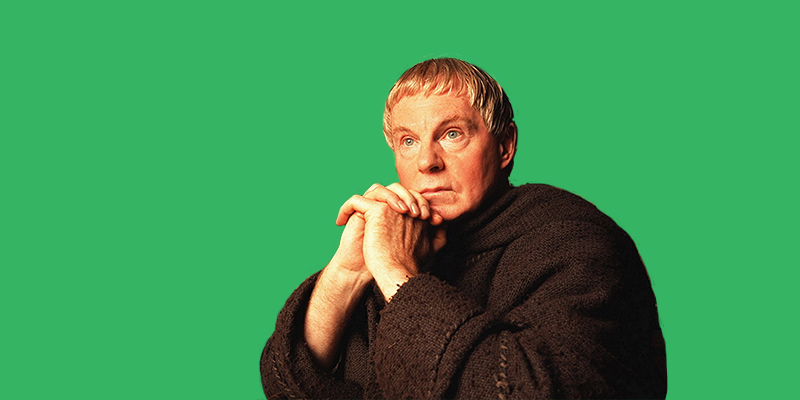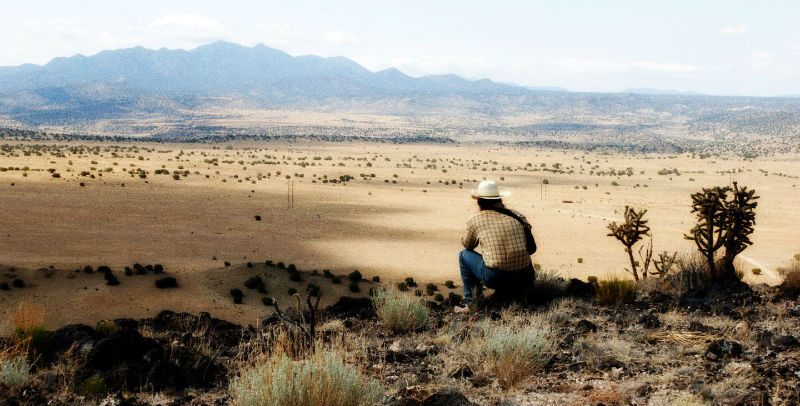Well, folks, the end (of the year) is nigh, which means it’s time to look over the many stories we’ve run in the past year and pick our favorites. Humans are pattern-seeking creatures, and as we assembled our list, certain trends became evident. We may tell ourselves stories in order to live, but we tell crime stories in order to survive. Crime fiction can get us out of a bad mental state. It can open our minds, free us from expectations, ground us in reality, or send us catapulting into a realm of fiction so dissonant from our natural states that we emerge at the end, blinking, ready to believe fact is fiction and fiction is fact. Crime fiction also acts as a focuser, processing our traumas, helping us to better understand our obsessions, and forging new connections between real-life issues and their fictional representations. Beyond what crime fiction provides for us, we also just love it, and many of the essays below reflect an unabashed affection for the genre. Crime fiction is always there for us, as a friend, a window, and a mirror, no matter what else is going on in our lives.
And without further ado, our favorite stories of 2018. Thanks to all the fantastic writers who make this site possible.
__________________________________
The Power of Crime Fiction
__________________________________

On Junk Science, Pop Forensics and Crime Fiction
by Andrew Case
Andrew Case, as a crime writer and expert on police oversight and reform, looks at the pernicious effect of junk science propagated by crime fiction and television, and shows how pop culture continues to disseminate untruths long after they are discredited in real life. Coming at the heels of a year full of revelations about the dubious science behind blood spatter, and after decades of criminal justice work overturning wrongful convictions based on junk science, Case’s essay is both a necessary contribution to ongoing debates and an important reality check for a community that can be a bit too comfortably ensconced in fiction.
Fighting Injustice with Fiction
by Ausma Zehanat Khan
International human rights lawyer and prolific author of genre fiction Ausma Zehanat Khan wears many hats, yet her work, no matter the medium, always emphasizes the fight against injustice that has shaped Khan’s entire life. Here, Khan remembers her first experiences with activism, and looks at the power of fiction to give voice to those society would prefer to ignore.
Jim Crow Stories Made Me Want to Write Spy Fiction
by Jason Overstreet
“Their voices are constantly calling me back, binding us. They have a story to share. They’re trying to tell me that someone unknown to modern folk did something extraordinary way back when.” In this powerful, evocative essay, Jason Overstreet recalls learning of the horrors of Jim Crow from the stories of his father, and using the lens of spy fiction to process historical trauma and as a metaphor for the code-switching and performances necessary for the vulnerable to survive. This essay speaks to our need to understand the experiences of our ancestors, and the power of fiction to process trauma.
The Magic of Longmire Days
by Bobbi Neely
Each year, thousands of fans of Craig Johnson’s series featuring Walt Longmire (and of course, plenty of fans of the television adaptation) gather in Wyoming for Longmire Days, a festival featuring activities, celebrity appearances, long (or short) horseback rides, and most importantly, community. Here Bobbi Neely recounts her own experiences at the festival, and the strong sense of community and belonging that draw her and her son to return, year after year. This article perfectly captures the ability of crime fiction to bring folks from disparate worlds and from all over the country together.
Reading V.I. Warshawski on the South Side of Chicago, 1982
by Tracy Clark
In 1982, Tracy Clark was “an African-American kid from the South Side of Chicago,” a fervent reader trying to find herself in the worlds of Sam Spade, Jane Marple, and Hercule Poirot. Then, one Sunday she discovered a book by Chicago’s own Sara Paretsky and found out about Paretsky’s soon to be iconic detective, V.I. Warshawski. This ushered in a new era in books, one that belonged, as Clark describes it, to “PI Woman”—”She was capable and smart and dogged. She didn’t type memos or make her boss coffee. She was her boss.”
__________________________________
Obsessions
__________________________________

Queer Friendship and the Psychological Thriller
by Tara Isabella Burton
What a thriller is, not to mention what a thriller can do, changes by the season. It’s the one of the most quickly evolving and innovative literary forms around, and a big reason why is because authors like Tara Isabella Burton are coming along with a deep appreciation for the classics, an impulse to interrogate those classics, and the creativity to push the form forward in books of their own. In this learned and ridiculously engaging essay, Burton takes three great works—Carmilla, The Talented Mr. Ripley, and Rebecca—and asks readers to return to them as stories of queer friendship and identity. “The best stories of obsessive friendship,” Burton writes, “are the ones that explore just how closely intertwined are the desire to possess and the desire to be…” This kind of critical, creative reading is like putting a set of jumper cables on a stack of old, beloved books.
Obsession, Identity, and the New Thriller
by Alice Bolin
Culture sites, at their best, should feel like an ongoing conversation, which is why it was so heartening and exciting to see this essay from Alice Bolin, author of Dead Girls: Essays on Surviving an American Obsession. Bolin, who has established herself as an innovative thinker and an authority on the intersection of pop culture and crime, here picks up a strand from Tara Isabella Burton’s essay on Queer Friendship and ties it to a string of groundbreaking thrillers released this year, including Phoebe Walker-Bridge’s hit TV series Killing Eve, and Burton’s own book, Social Creatures. These stories, Burton writes, are managing to “queer the thriller,” and she posits that their power comes from their ability to “speak so eloquently about the volatility of identity.”
The Transgressive Noir of James M. Cain
by Laura Lippman
Laura Lippman reflects on a lifelong admiration for James M. Cain, from a Christmas gift of “six of the sexiest paperbacks I had ever seen” to writing about the author as a journalist, to finally penning her own Cain homage. In charting the progress, Lippman coins a stunning and elegant definition of noir: “dreamers become schemers.”
A Life of Crime Fiction and Gangster Rap
by Tod Goldberg
In this essay, Goldberg draws the connection between the crime novels he grew up with—greats like Elmore Leonard and Lawrence Block—and the gangsta rap coming out of the West Coast in the late 80s and early 90s, in particular NWA and Ice Cube’s iconic opening line: “Straight outta Compton, crazy motherfucker named Ice Cube.” “This wasn’t a third-person story anymore,” Goldberg writes, “nor was there any equivocation, instead, this was a first person narrator telling you that he was a crazy motherfucker, which tells the listener, in seconds, that anything can happen.” Goldberg frames rap as an evolutionary crime fiction and grapples with his own audio history, from the thrill of bumping NWA during a summer job on a golf course to his adult reckoning with hip hop’s misogynistic threads. This is one of those essays that takes you in a dozen directions you didn’t see coming, each one an insight into an art form and an individual.
__________________________________
Obsessions: Sherlock Holmes
__________________________________

Searching for a Soul Mate: Must Love Sherlock Holmes
by Iris Martin Cohen
“I could always read stories of my one true love, secure in the knowledge that he would appreciate me.” Iris Martin Cohen remembers her emotional love affair with Sherlock Holmes, her real-life affair with a poor substitute, and how she found a balance between the romance of fiction and the romance of real life. Cohen speaks to the mutability of the character—Sherlock can simultaneously be a reflection of who we are, what we want, and what we wish we no longer needed.
The Art of the Painstaking Sherlock Recreation
by Rebecca Romney
To paraphrase Jane Austin, it is a universally acknowledged truth that a fictional place, if popular enough, will be recreated in real life by an eccentric American. Here, rare books dealer Rebecca Romney guides us on a tour of an exact replica of 221 Baker Street, located in Pennsylvania basement, and lovingly crafted (complete with secret passageway behind a bookcase!) by Sherlockian Denny Dobry.
The Politics of Sherlock
by Lyndsay Faye
While Sherlock Holmes, as a representative of ultimate rationality, has oft been appropriated as a symbol of conservatism, Lyndsay Faye, in in this article on the political Holmes, shows how wrong it would be for readers to make the assumption that Sherlock is some staid supporter of middle class norms and British Empire: “Holmes practically bit his thumb in the direction of most of the aristocracy, openly praised America, lazed about experimenting with a variety of chemicals, paid street urchins rather exorbitant sums to ferret out his clues for him, and composed avant garde odes on his fiddle—his entire attitude is indicative of the “Bohemian” man of modest (albeit later considerable) means.”
__________________________________
A Modest Proposal (for Crime Fiction)
__________________________________

We Need More Problematic Women in Crime Fiction
by S.L. Huang
“The characters we want to punch in the face are some of the best characters in fiction, darn it. And I want more of them to be women.” Stuntwoman and crime writer S. L. Huang makes the case for more problematic women in crime fiction, and more complex and nuanced versions of these characters. I love this essay because it gives us permission to interact critically and fearlessly with the genre we love, from the start of the piece, where Huang recommends the revolutionary idea of putting down a book as soon as it gets exploitative (re: as soon as the first dead hooker shows up), to the finish, where she brings in a needed dose of intersectionality. Plus, S. L. Huang is a crime writer, weapons expert, and stuntwoman. Let me repeat that: crime writer. Weapons expert. And stuntwoman. Can you get any cooler?
Why Isn’t There More Crime Fiction From The Bronx?
by Angel Luis Colón
We’ll leave it to Angel Luis Colón to explain why this question is both complex and important: “The simple fact remains: there is a woeful amount of crime fiction coming from a borough that’s been synonymous with crime for nearly a century. And it’s not my belief that the genre should be the top genre out of the borough—that would be silly—but I think it’s worth pointing out and I think it’s worth thinking about the “why” in this equation. What are the downstream impacts? Are enough writers able to portray what they know? Are audiences being exposed to fiction that provides all perspectives? Does it take a life of comfort to fictionalize crime? If the majority of a population is marginalized and under the middle-class line, is it merely lack of opportunity to pursue an interest in the crime fiction genre?”
__________________________________
Traumas and Lessons
__________________________________

The Body and the Library
by Shelley Puhak
When Shelley Puhak was young, a woman’s body was found outside the local library; she had been murdered. Years later, Puhak looks back on the violation of a safe space, reading Nancy Drew, Agatha Christie, the way girls are made to feel timid and at risk, and the systemic failings that betrayed that woman at the library, before and after her death. “The library is where everything opened up,” Puhak writes. “And the library is also where it all began to shut back down.”
Cults: The One Thing I Will Never Write About
by Hannah Mary McKinnon
This essay from Hannah Mary McKinnon is both heartbreaking and healing. Decades ago, McKinnon lost a close friend to a cult’s mass suicide. McKinnon’s piece is a beautiful story of friendship beyond the grave—she helps her friend’s mother with the funeral, and wraps up her friend’s affairs—and a haunting reflection on why we are drawn to dark stories, and why we must sometimes turn away.
Mary Higgins Clark Warned Me to Fear Men, But I Didn’t Listen
by Becca Schuh
Becca Schuh re-reads Mary Higgins Clark in an era when terrible men are being exposed nearly every week as predators, and asks why she didn’t better learn the lessons those novels were trying to teach her: to be suspicious, to be vigilant, and to know that if you guard is down, any man might be capable of the worst. Life taught her those lessons instead.
The Comfort of Crime Novels
by Emily Winslow
“I’ve come to believe that crime novels are comforting not in spite of their darkness, but because of it. They’re not about things going perfectly; they’re about creating a new, second-place vision for life after a terrible thing has taken first-choice hopes away.” After a brutal attack, and after the trial of her attacker is scuttled on a technicality, Emily Winslow meditates on finding solace in fiction.
The Gothic Horror of 1980s Ireland
by Liz Nugent
Liz Nugent’s essay on growing up in the Ireland of the 1980s is harrowing, and with our current administration, increasingly familiar. Reading this essay in the wake of Ireland’s referendum on abortion serves as the perfect reminder of why the referendum was so necessary, how anger can lead to change, and how dark days can inspire great (crime) writing.
__________________________________
True Crime Stories
__________________________________

A Preacher, a Scam, and a Massacre in Brooklyn
by Sarah Weinman
Sarah Weinman’s new CrimeReads article, “A Preacher, a Scam, and a Massacre in Brooklyn” is everything I want from a true crime investigation: taking a piece of recent history, shining a line on it, and in the process fundamentally altering how I see a familiar piece of the city and its history. In this case, Weinman looks at a townhouse in Crown Heights and tells the story of a charismatic, self-styled ‘preacher’ who for years ran a donations scam out of it, scooping up vulnerable women and sending them out dressed as nuns to collect donations. Then the women began to disappear, and the real secrets of the ‘church’ were found out. This story comes from the 1970s, but is continuing to unfold today. I pass by the townhouse regularly, and I’m sure from now on a deep shudder is going to run down my spine every time I do.
Isidore Zimmerman: The Man the System Couldn’t Break
by Nathan Ward
There are some life stories that are just too crazy, too powerful to make up. Here, Nathan Ward tells the story of Isidore “Izzy” Zimmerman, a young New Yorker pinched on a murder rap and scheduled to be executed at Sing Sing, only to be granted last minute clemency and sentenced instead to life in prison. Zimmerman was innocent of the charges against him, but he served almost 25 years anyway and endured brutal beatings and solitary confinement, but they couldn’t break his spirit. After he was finally exonerated, Zimmerman wrote a book and fought for the right to sue the state of New York. Ward was working at a paperback shop when he met Zimmerman, and looking back on their brief acquaintance he remembers a man who wouldn’t let the system take him down, and who wanted to get rich so that he could take all his friends out for Chinese food.
The Strange Case of Jean Harris
by Gina Wohlsdorf
This bizarre true crime story is a great example of fact as stranger than fiction. In 1980, schoolmistress Jean Harris killed her lover for a whole set of understandable reasons: “Jean Harris was in a seriously embattled position at work, she was addicted to prescription meth, and her boyfriend of a decade and a half was slo-mo dumping her for a twinkie he had on the side.” Then, she went ahead and told the court she shot him four times by accident while trying to kill herself. Crime writer Gina Wohlsdorf came across the case when she was working at an archive helping to catalogue the courtroom sketches of Ida Libby Dengrove, one of Harris’ (only) friends.
__________________________________
The Writing Life
__________________________________

Motherhood Does Not Kill Creativity
by Natasha Bell
Horror fiction is sometimes described as a repository for damaged women, a place to glory in women’s dysfunction, including complex attitudes towards parenting. I’d argue that mystery fiction fulfills the same role, in that ever-renamed genre of domestic suspense/romantic gothic/psychological suspense/gothic suspense/marriage thriller/grip lit/etc, hence my love for this essay on artists, “art monsters,” domestic suspense and motherhood. With grace, nuance and a slow-burning righteous fury, Natasha Bell explores the double standards that lead to praise when women seriously question their attitude toward motherhood in fiction, especially genre fiction, yet turn to condemnations when women wrestle with complex questions of motherhood and creativity in memoir and other nonfiction.
A Brief History of Reporters in Crime Fiction
by J. Kingston Pierce
The PI and the investigative reporter are spiritual cousins, so it shouldn’t come as any surprise that the annals of mystery fiction are filled with “scribbler sleuths,” as journalist and crime fiction connoisseur J. Kingston Pierce describes them. Here, Pierce takes us through the history of reporters as protagonists in crime fiction, from the 1930s newsroom heyday down to the modern era of crumbling media empires and lone reporter holdouts fighting the good fight, with a dash of the immortal Pete Hamill in between. There isn’t a book mentioned in this piece that you won’t want to read at some point. Plus, for those conversant in newsroom lingo, there’s a nice little hat tip / hidden code in the piece.
__________________________________
Appreciations
__________________________________

Brother Cadfael: An Appreciation
by Levi Stahl
Look, I wasn’t expecting to finish this piece and to be completely convinced that I need to go out and buy a bunch of books about a twelfth century crime-solving monk who was also adapted for television by Derek Jacobi. Nothing against Cadfael, I just didn’t think he was my cup of tea. And then I read Levi Stahl’s homage to the long-running, now-concluded Ellis Peters series, and it was so deeply felt, so powerfully written, that I thought, you know what, I have to read that. That kind of discovery is such a great feeling for a reader, and I really owe Stahl one. He also convinced me, with this line, that historical cozies might actually be my new bag: “The cozy, for us, can only ever be a temporary escape, a way of ever-so-gently girding our loins for the real-world battles it temporarily lets us forget.” I’ve been underestimating a whole area of literature, like a fool.
Emma Lathen: A Crime Reader’s Guide to the Classics
by Neil Nyren
Neil Nyren’s series “A Crime Reader’s Guide to the Classics” has been eye-opening in nearly every installment, but this one was a special favorite, both because of the evident and longstanding affection Nyren has for the work of Lathen, and because Lathen is such a monumental mystery figure who’s unknown to so many of us. Lathen was the pen name used by two lifelong friends and writing partners—Mary Jane Latsis and Martha Henissart, an economics professor and a high-powered lawyer, respectively. These were two women who conquered the business world in midcentury America and also wrote about the ins-and-outs of that world in compelling fashion through their globe-trotting, finance-savvy mysteries. Nyren has an abiding appreciation for their work and writes about it with eloquence and insight. Here’s hoping that this essay might prod some savvy publisher to begin re-issuing Lathen’s work for today’s readers.
Classic Chase Novels and What We Can Learn From Them
by Lou Berney
Sometimes just by grouping a certain set of books together, a reading list can entirely change the way you think of a few stories. That’s how it was with Lou Berney’s collection of classic chase novels, which includes old favorites like Frankenstein and The Talented Mr. Ripley and for me casts them in a new light. Of course Ripley is a chase novel, and yet thinking of it that way adds a new complexity to what’s happening to our anti-hero on his strange Italian sojourn. Berney also gives his list a craft element, breaking down the mechanics of how to set your characters on the run and what to do with them once they’re moving. It’s heart-pounding stuff.
__________________________________
Mysteries All Over the World
__________________________________

Borderlands Noir
by Molly Odintz
Crime novels and their settings are inextricably linked in our imaginations, and for my money there’s no more fertile terrain for a story than the borderlands. In article, CrimeReads’s associate editor, Molly Odintz finds mysteries and crime novels from all over the world that explore that murky, interstitial territory where law is always in doubt and allegiances are obscure. This is the crime fiction of divided cities, disputed borders, and no man’s lands, and I fully plan to dedicate a good deal of my free time over the next few weeks to discovering new authors and works from Odintz’s selections.
Towards a History of Mediterranean Noir
by Sandro Ferri, translated from the Italian by Michael Reynolds
This essay captures in a few thousand words all the reasons why I love crime fiction. Beginning with the murder of Abel by his brother Cain and the epic poems and tragedies of ancient Greece, then moving to the modern era where Camus gave way to Manchette, Jean-Claude Izzo, and Yasmina Khadra, Ferri draws a provocative and insightful line, defining a literature that shares certain attributes—an “inquisitive” tone, a keen sense of fatalism and irony, the defense of society’s most vulnerable, and an appreciation of grilled fish and hearty drink—that strike a chord with so many of us. I’ve always read Mediterranean Noir, always will, but it was a special treat to find the books and cities that have meant so much to me tied together this way. And it doesn’t hurt that the essay’s author is the publisher (Europa) who helped to make sure so many of these works could be read and appreciated in the U.S.
Borges, Bioy Casares, and the Dawn of Argentine Mystery
by Scott Adlerberg
There’s an essay for every taste, but if you want to hook the editors here at CrimeReads take a cue from Scott Adlerberg and begin your piece this way: “In 1945, two renowned Argentinian writers, Jorge Luis Borges and Adolfo Bioy Casares, launched The Seventh Circle (El Septimo Circulo), a line of detective novels translated from English.” Here, Adlerberg tells the unlikely story of two mystery lovers who also just so happened to be literary icons, good friends, and cultural forces during a tumultuous period in Argentine history. Sometimes the march of culture can feel like an impossibly grand and distant phenomenon; other times we’re reminded that it takes a few dedicated souls to move the thing along.




















